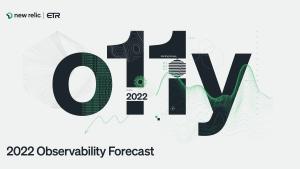Back in March 2022, I discussed ways to convince your boss that observability is essential for understanding your application’s performance and customer experience.
Based on our 2022 Observability Forecast report, many bosses don't need convincing. In fact, bosses are probably one of the biggest supporters of observability. But if your boss does need convincing, here are five arguments you can make, with evidence from the forecast, to help make observability a priority.
Advocate observability like a boss.
According to the report, 66% of respondents perceived directors, VPs, and V-level executives as advocates or strong advocates of observability. If your leadership is part of the remaining 33% who don’t advocate for observability (or worse, resist or aren’t even aware of it), and you are trying to convince them to build an observability practice, you have a clear first argument: everyone else is doing it, and we should too.
Levels of observability advocacy by role
Lucky for you, the report is full of facts, figures, and quotes that show why most bosses are observability advocates. For example, 82% of IT decision-makers (ITDMs, aka bosses) saw observability as a key enabler for achieving core business goals.
This annual report is part of our commitment to data-driven engineering. As seasoned IT practitioners, our experiences often inform our sense of the correct course. But we always need to do more than follow our gut. We need to set aside assumptions and back up our decisions with data. And that even includes our strong opinions about observability itself.
This year's report looks at what’s driving observability practices today, how organizations are transforming those practices, and how observability impacts the lives of technical professionals. You’ll also find insights about the emerging technologies that will need observability in the future like IoT, edge computing, Web3, and blockchain, but also some more obscure technologies like indiscriminate personalization and cloud-based gaming.
Emphasize the importance of monitoring your full tech stack.
While the report shows that many of us feel strongly about the importance of observability, it also shows most of us have a long way to go to achieve full-stack observability (by the report’s definitions, only 27% had achieved full-stack observability, and just 5% had a mature observability practice).
For most of the organizations surveyed, monitoring remains highly fragmented, and implemented solutions often don't monitor the full tech stack. What this tells me is that even if your boss is an advocate of observability, you may still have some convincing to do in terms of ensuring the entire stack is monitored.
Connect observability to the bottom line.
In a finding that triggers an instant migraine for me, almost a quarter of respondents primarily learn about problems through manual checks. And one in ten only know something is wrong after users complain and a ticket is generated.
How respondents detected software and system interruptions
Having lived with that reality in more than one company, I can tell you from experience this only leads to slow response times, painfully long MTTD (mean time to detection) and MTTR (mean time to resolution), poor customer experience, and angry executives. Avoiding (or if you’re in the same boat as these folks, addressing) this is, more than anything else, the reason to push your leadership to embrace and expand your organization’s capabilities with regard to monitoring and observability.
In fact, the data supports a strong correlation between full-stack observability, fewer outages, a faster MTTD, and a faster MTTR.
Discuss the impact of tool and data fragmentation.
The data also points unambiguously to the reality of heterogeneous monitoring environments. When asked about the number of tools they use to monitor the health of their systems, survey respondents overwhelmingly reported using more than one.
Number of tools used for observability capabilities
Any seasoned IT practitioner knows you sometimes need multiple tools. The real question should never be “do I have enough (or too many) tools?” Instead, the important question is “am I accomplishing my goals?” With tool fragmentation, too often the answer to this more important point is “no”—or even if the answer is yes, it can be hard to achieve those goals efficiently. When fewer tools can reliably and efficiently cover multiple uses, that’s a clear win for everyone.
To that point, almost half of the respondents said their organizations use seven or more monitoring tools. With that many tools, identifying the root cause of an issue invariably requires swivel chair integration, where you throw different tools onto multiple screens and swing your chair from side to side to get a full view of what’s happening in your environment. Again, the line between enough and too many can be a difficult one to balance.
In turn, this uncovers another critical piece of a mature observability practice: regardless of how many tools and techniques you use to collect information, a single repository for that data—with the ability to display related entities and events—is essential. Despite the source(s) of the data, almost half of those surveyed said they unify telemetry data in one place. And even though most have their data spread out, almost half said they would prefer to have it consolidated.
Preference for a single, consolidated platform versus multiple point solutions
Show them the value of observability—and that it’s on the rise.
Moreover, almost every company surveyed saw this too, and described plans to expand their observability capabilities in the next three years, adding everything from network, security, and database monitoring to mobile, serverless, synthetic, and Kubernetes monitoring.
Capabilities deployment summary for 2022 through 2025
The benefits of observability are clear and, like anything worthwhile, it comes with a cost. But surprisingly, it’s not the bank-busting cost you might expect. Notably, 84% of organizations that achieved full-stack observability (based on the criteria from the survey) allocated at least 5% of their total IT budgets toward achieving that goal, far lower than I would have expected.
Despite the challenges and the current state for many organizations, the benefits—increased efficiency, business and/or revenue growth, reduction in staff burnout, and, of course, improved uptime, reliability, and customer experience—are impossible to ignore. It’s also heartening to read that observability is on almost everyone's roadmap.
Next steps
Dive into the 2022 Observability Forecast to see more of the insights and best practices uncovered in the research—and share it with your boss!
If you'd like to explore observability further, sign up for a free New Relic account, ingest your data, and start reaping the benefits of observability today.
The views expressed on this blog are those of the author and do not necessarily reflect the views of New Relic. Any solutions offered by the author are environment-specific and not part of the commercial solutions or support offered by New Relic. Please join us exclusively at the Explorers Hub (discuss.newrelic.com) for questions and support related to this blog post. This blog may contain links to content on third-party sites. By providing such links, New Relic does not adopt, guarantee, approve or endorse the information, views or products available on such sites.


